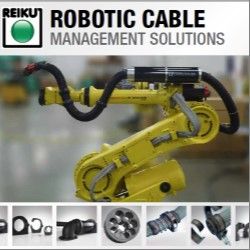Robotics help Toys “R” Us improve efficiency of e-distribution
The robots that scoot around the new Toys "R" Us e-commerce fulfillment center at Tahoe Reno Industrial Center may help the logistics industry in northern Nevada unsnarl one of its challenges.
For much of the past two decades, distribution centers have gotten larger as logistics experts sought to capture economies of scale, says Jerry Storch, the chairman and chief executive officer of Toy "R" Us Inc.
But in recent years, industry experts realized the costs of moving stuff around inside a giant warehouse - hauling it the distance of a couple of football fields on a forklift - ate up any efficiencies that they gained from a big operation.
And that's especially critical in an e-commerce fulfillment operation, where pennies matter.
Instead of handling pallets of merchandise shipped to retail stores, e-commerce centers such as the new Toys "R" Us ship one or two items at a time to fill orders that consumers placed on the Internet.
At the 300,000-square-foot Toys "R" Us e-commerce distribution center, employees don't spend time moving stuff around.
Instead, that job is done by a robotics system developed by Kiva Systems of North Reading, Mass.
Visitors who might expect to see a relative of Robbie the Robot working inside the distribution center instead see a fleet of orange, ground-hugging robots - each about four times the size of the Roomba vacuum-cleaning robots that consumers use around the house.
Atop each of the orange robots are four shelves, each about 30 inches wide.
The robots-with-shelves bring merchandise to workers, who spend their time picking and packing orders rather than moving around the distribution center.
Guidance for the robots comes from QR codes printed every couple of feet on the distribution center's floor, and a sophisticated software directs the flow of merchandise from its arrival until it's shipped.
Robotic systems hold promise to bring more control over labor costs to the operators of big distribution centers, says Ron Lembke, an associate professor who teaches supply-chain management at the University of Nevada, Reno, College of Business.
"This seems very interesting," he says of the Toys "R" Us system. "This could be a good long-term solution."
Storch says cost-control in e-commerce fulfillment is an important issue for Toys "R" Us because the company saw 30 percent growth in its Internet sales last year.
"It's your job to get the products to our customers in the most efficient way possible," he told more than 60-plus workers at the distribution facility's official opening last week.
During the peak holiday season, Toys "R" Us expects to add about 230 positions, and it expects that year-round employment will be something greater than 100 full- and part-time workers.
The facility will handle orders from the West - a region that extends from parts of Minnesota and Iowa to Hawaii and Alaska. Nearly 100,000 units a day will be shipped from the facility during the peak of its first holiday season.
Storch said the business-friendly tax and regulatory climate in Nevada were a key element in the company's decision to locate at Tahoe-Reno Industrial Center.
The company is leasing about half of a 632,000-square-foot building owned by Eagle CPT. The building, which had stood entirely vacant since its completion in September 2008 until Toys "R" Us took possession of its space in April, is a project of Reno-based Development Arts LLC.
The building has earned initial Gold certification through the Leadership in Energy and Environmental Design program of the United States Green Bilding Council.
Featured Product

REIKU's Cable Saver™ - The Most Versatile Modular Robotic Cable Management Solution
REIKU's Cable Saver™ Solution eliminates downtime, loss of revenue, expensive cable and hose replacement costs, maintenance labor costs. It's available in three sizes 36, 52 and 70 mm.
All of the robots cables and hoses are protected when routed through the Cable Saver™ corrugated tubing.The Cable Saver™ uses a spring retraction system housed inside the Energy Tube™ to keep this service loop out of harms way in safe location at the rear of the Robot when not required. The Cable Saver™ is a COMPLETE solution for any make or model of robot. It installs quickly-on either side of the robot and has been tested to resist over 15 million repetitive cycles.
REIKU is committed to providing the most modular, effective options for ensuring your robotic components operate without downtime due to cable management.
www.CableSaver.com
